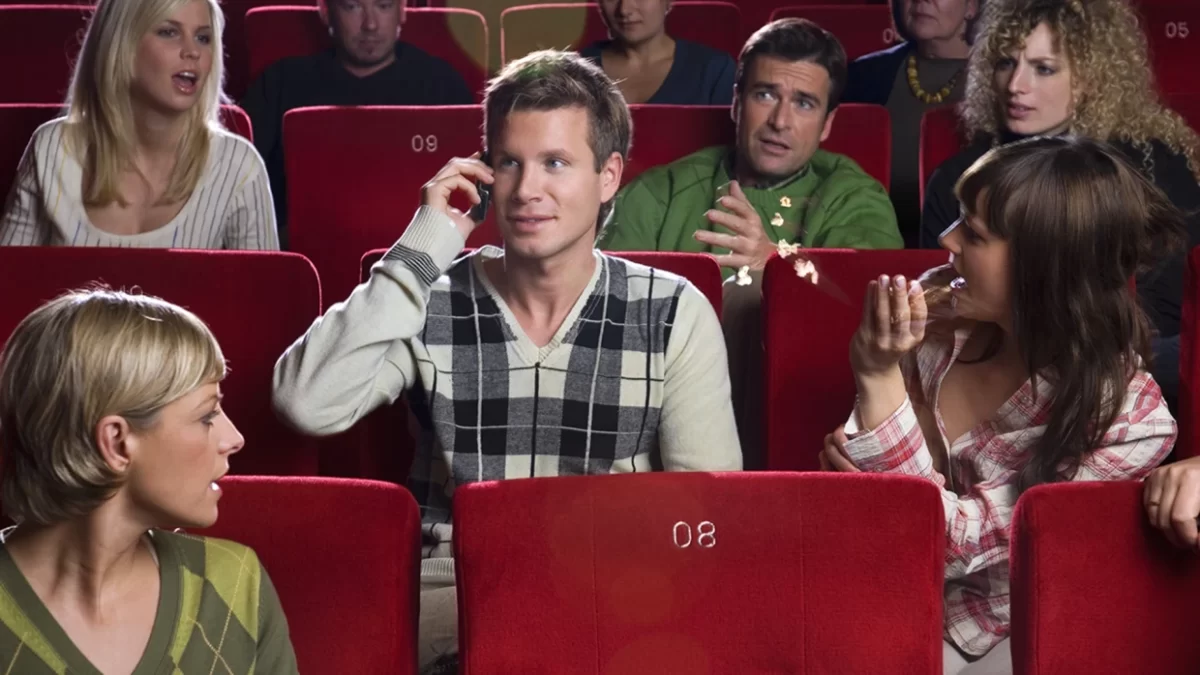Ever since audiences have begun to return to theaters following the pandemic, there’s been a change in how people behave in a cinema socially. Despite several advertisements that play before the movie that ask audiences to stay silent and refrain from using their phones, it seems as if more and more people are choosing to ignore them. Whether it be showing up 40 minutes late, exclaiming reactions at full volume or recording the screen, there is a new way many people approach visiting the movie theater. Is there a reason for this and are the days of “movie theater etiquette” behind us?
Is Streaming and the Pandemic to Blame?
While the very early days of cinema may have been a social outing, quickly a set of social principles were set that audiences were expected to follow. This included being seated by the time the film began and being quiet and courteous while the film was playing. With the growth of portable technology, these guidelines evolved. Now theaters ask viewers to silence their phones and refrain from using them inside. These ideal rules are widely known and other than the occasional disrupter, most followed them. Then the pandemic happened and the majority of the world didn’t visit theaters for two years.
During this time, streaming was the home of most entertainment. Even big-budget films that had previously been meant for the big screen were streamed at home. Many began to associate the idea of movies with their couch. The ability to pause a movie to use the restroom or grab a snack was comfortable. It sure beat the alternative of having to run to the bathroom to miss as little of a movie as possible or paying outrageous amounts for a small popcorn and soda.
So, as theaters began to slowly re-open, many came to the conclusion that streaming something at home was a better option. If they were to return, it needed to be something special — an event.
The modern moviegoing experience reflects this idea of it being an event. No longer is the point of going to a theater just to see a new movie. To many, going to a cinema means getting a group of friends together. They splurge on concessions, comment on the film while watching and share the experience through social media.
This means loud, talkative audiences that feel the need to share their opinions on the film in real time. When these comments are not out loud, they are often shared through text, DMs or snaps of the screen. Modern audiences need their theater experience to be their way.
It’s a Matter of Respect
In some ways, this is understandable. Ticket and concession prices have been steadily rising over the past few years. Even to the point where for most, seeing a movie regularly is not economically possible. On top of this, many find staying home and watching something on Netflix or Max is a far more enjoyable experience.
Spending the money and energy to go to a movie theater needs to be something more than just quietly sitting in a dark room with a bright screen. On the flip side, though, what that “special experience” is to many is just plain rude to other moviegoers.
However, there is a greater point to going to the cinema than just to see a new movie. A movie theater allows viewers to watch a film in an environment without distractions in the best quality possible. This directly collides with the idea of the moviegoing experience. Talking and bright phone screens are both very distracting and take away from the sound and image quality of the theater. When you get down to the brass tacks, it’s the battle of two mindsets: Going to a theater to experience a movie or going to a theater to experience the theater.
While going to the cinema can still be an event, the top priority should always be enjoying the film. If the need to watch a film with friends and remark on every scene with your voice or with your phone is too much, throw a watch party at home. If watching a movie is an absorbing escape from reality that allows you to appreciate art, people and life, the theater is your home.



